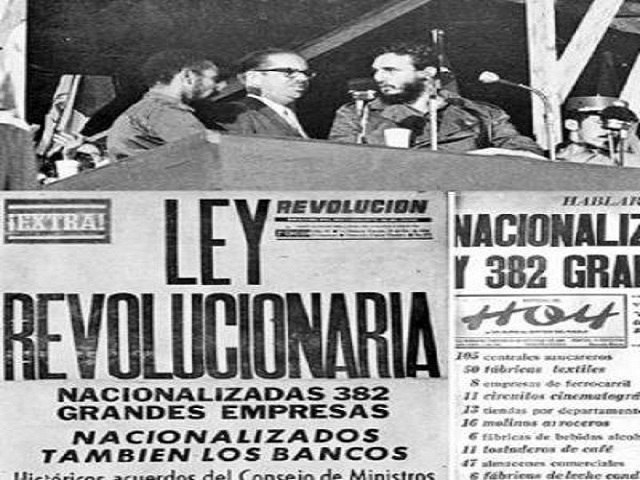Mayabeque, Cuba: In October 1960, US and private banks were still operating in Cuba, which during the prerevolutionary stage played an essential role in the corruption of the state apparatus, with the theft of national wealth promoted by the governments of the day that facilitated the evasion of taxes and duties on Yankee firms.
Also very directly related to these spurious interests was a native class that owned a representative sector of industry and services that, opposed to the direction of the Revolution, took its capital abroad and stopped developing production and services, while others many cases supported the counterrevolutionary conspiracies or had an active participation in them.
This binomial of US banks, together with the domestic lackeys as remnants of the neocolonial power structure, formed an important bulwark for the first aggressive plans and actions against the country that were orchestrated in Washington.
In response and as part of the radicalization of the revolutionary process, Prime Minister Fidel Castro appointed in November 1959 Ernesto Che Guevara as president of the National Bank of Cuba (BNC), with the main mission of preserving the depleted state coffers and preventing the leakage of money abroad by the treacherous bourgeoisie and the corrupt.
It should be remembered that during the flight of Batista?s followers after the fall of the dictatorship, 424 million dollars were taken to the United States, mainly, and the few convertible currencies of the nation had to be protected, also in danger by characters who began to betray due to the radicalization of the revolutionary process and the fear of imperial aggression.
By indications of Commander Ernesto Che Guevara himself, Law No. 891 referring to the nationalization of Banks was drafted and proposed, approved by the Council of Ministers on October 13, 1960 to guarantee that the banking function could only be exercised by the State as the sole way of guaranteeing the economic sovereignty of the nation.
The text of the legislation included a historical assessment of the role of the United States banks: ?One of the most effective instruments of imperialist interference in our historical development has been represented by the operation of the North American commercial banks, which have served as a financial vehicle to facilitate the monopoly action of North American companies in Cuba and for the massive invasion of the country by imperialist capital (?). “
The legislation nationalized five public credit institutions and 44 private banks, six of them foreign, and declared the National Bank of Cuba as the sole continuation of all private banks.
Days before, on September 17, the American banks The First National City Bank of New York, The First National Bank of Boston and The Chase Manhattan Bank, with all their branches and dependencies in the national territory, were nationalized.
Only the Royal Bank and Nova Scotia, Canadian entities that were soon after acquired by the Cuban state, were excepted from this measure.
On October 13, the Council of Minister also approved Law 890 “with the aim of definitively liquidating the economic power of the privileged interests that conspired against the people.”
The legislation determined the compulsory expropriation of 382 companies, including 105 sugar mills; 18 distilleries, alcoholic beverages, construction, transportation and food companies, among others.
This nationalization of the private business sector, completed to the same extent in the banking system, dealt a decisive blow to the internal sectors allied to the imperialist plans against the country that in that distant 1960 wanted to reinstate the neocolonial republic, at the same time that it opened the way to the profound and definitive economic and social changes of the Revolution.

